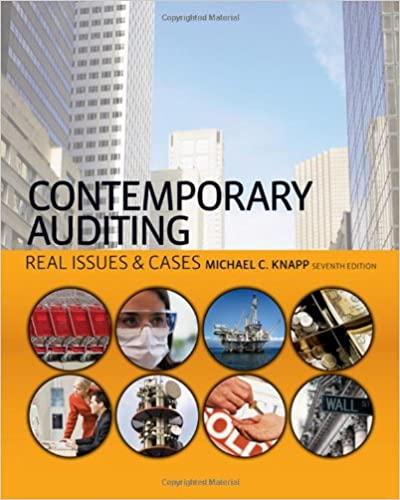Executives in the multibillion-dollar toy industry constantly search for the next big hit, a magical toy that
Question:
Executives in the multibillion-dollar toy industry constantly search for the next big "hit," a magical toy that will trigger a nationwide frenzy among youngsters comparable to the mania sparked in recent decades by the Cabbage Patch Kids and Tickle Me Elmo. In more "ancient" times, silly putty, the slinky, and the hoola hoop prompted shouting matches and elbow-to-elbow combat among small armies of short- tempered parents intent on acquiring the latest must-have and hard-to-find toy as a birthday gift or Christmas present for little Suzie or tiny Tommy.
During the mid-1990s, the popular television program that featured the Mighty Morphin Power Rangers produced a windfall of revenues and profits for Happiness Express, Inc., a small New York-based company. Happiness Express had purchased licensing rights that allowed the company to market a wide range of Mighty Morphin Power Rangers toys and other merchandise. Unfortunately, similar to most toy fads, the Power Rangers craze soon subsided. To find a replacement source of revenue for his company, Joseph Sutton, Happiness Express's chief executive officer (CEO), turned to a member of the British royal family, Sarah Ferguson, the Duchess of York.
Following her divorce from Prince Andrew, the second son of Queen Elizabeth II, the Duchess decided to try her hand at writing children's books. Among the characters she created was Budgie the Little Helicopter. Joseph Sutton acquired U.S. licensing rights for toys and other merchandise featuring Budgie. Sutton believed that Budgie would be a huge hit in the United States and generate large sales of toys and related merchandise linked to him and his small squadron of friends. In announcing his company's relationship with Sarah Ferguson, the ever-optimistic and buoyant Sutton proclaimed that, "Happiness is proud to represent Budgie the Little Helicopter and to help him make his flight to America."
"In Kids We Trust"
Joseph Sutton and his older brother, Isaac, worked for years as sales representatives for various toy manufacturers. In 1989, the two brothers organized their own toy company, which they named Happiness Express, Inc. Joseph assumed the title of CEO. while his brother became the company's chief operating officer (COO). Despite an initial investment of only \($10,000,\) the Sutton brothers' company quickly gained a toehold in the fiercely competitive toy industry. Happiness Express catapulted from a few hundred thousand dollars of sales in its first year of operation to total revenues of more than \($40\) million for its fiscal year ended March 31, 1994.
The Suttons business model involved identifying trendy characters introduced to children in the United States by television programs, major movies, books, and other publications. The brothers then purchased merchandise-licensing rights for those characters from Disney Nickelodeon. Universal Studios. Warner Brothers, and major publishing companies. Licensed merchandise manufactured by Happiness Express included plastic figurines, stuffed dolls, shoelaces, battery-operated toothbrushes night-lights, bedside lamps, and a wide range of “back-to-school” items such as pencils, notebooks, and binders. Happiness Express marketed its merchandise to FAO Schwartz, J. C. Penney, Kmart, Target, Toys “R” Us, Wal-Mart, and other major retailers.
Central to the early success of Happiness Express was the Suttons’ heavy reliance on market research that tracked children’s interest in new media characters and toys.
In fact, Joseph Sutton coined the motto “In Kids We Trust” to express his company’s commitment to the results of that research.
Questions
1. Identify the primary audit objectives that auditors hope to accomplish by (a)
confirming a client’s year-end accounts receivable, (b) performing year-end sales cutoff tests.
2. Identify and briefly describe any mistakes or errors in judgment that Coopers & Lybrand may have made in its effort to confirm the Wow Wee receivable at the end of fiscal 1995. In your opinion, did these apparent mistakes or errors in judgment involve “negligenceo”n the part of the given auditors? Would you characterize the mistakes or errors as “reckless” or “fraudulent”? In each case, justify your answer.
3. Should the Coopers & Lybrand auditors have confirmed the receivable from West Coast Liquidators at the end of fiscal 1995? Why or why not? Should the auditors have included one or more sales to West Coast Liquidators in their yearend sales cutoff tests for fiscal 1995?
4. What alternative audit procedures can be applied to a large receivable of an audit client when a confirmation of that receivable cannot be obtained for whatever reason? Compare and contrast the evidence provided by these procedures with the evidence yielded by a confirmation.
5. The SEC charged certain executives of Happiness Express with “insider trading’
Do auditors have a responsibility to consider or investigate the possibility that client executives have engaged in insider trading activities? Defend your answer.
Step by Step Answer:

Contemporary Auditing Real Issues And Cases
ISBN: 9780324658057
7th Edition
Authors: Michael C. Knapp





